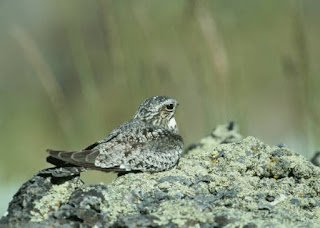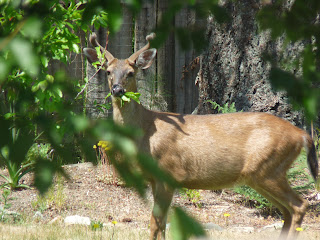by Sharon McInnes
I know the Spotted Towhee isn’t actually talking to me. Yet I can’t help but talk back. Maybe it’s a character flaw. Possibly.
Whatever their motivation, though, the Somerset blackbirds may, perhaps inadvertently, be setting themselves up as desirable mates, avian Lotharios, since female blackbirds prefer males with experience. And in the world of blackbirds (and many other birds) song variety is related to maturity: the more sounds a blackbird has in his repertoire, the more attractive he is as a mate. (I’ve heard of lots of less sane ways to pick a mate!)
Other urban birds are responding to their environments in unique ways. According to the work of Hans Slabbekoom of the Netherlands, Little Greenbuls, Great Tits, and European Blackbirds are changing the sound frequency of their calls in order to be heard above the din of the city. And scientists at the University of Sheffield have discovered that, after millennia of singing at daybreak and onwards, some European Robins living in big cities have begun to sing only at night! It’s just too hard to make themselves heard during the day when they have to sing loud enough to be heard above the noises of vehicles and people.
 |
| European Robin. Photo by Pierre Selim. CC license. |
And in Berlin, nightingales now sing louder on weekday mornings than on weekend mornings, when the streets are quieter. (Study by Brumm of the Berlin Free University – now there’s a concept!)
But it’s not just the songs of birds that are being affected by us humans, it’s also their stress levels. Well-meaning birders who use smartphone apps in the field may be doing the very birds they love a serious disservice. Birders who use apps (such as Audobon Birds and iBird Pro) in order to identify an unfamiliar bird song and/or to lure a bird out into the open for a photo shoot may be creating undue stress for the bird whose call they are playing, and maybe for other birds listening in, especially in the spring. Graham Madge of the Royal Society for the Protection of Birds explains: “… when birds hear their song played over and over again, they are likely to think it’s a rival male encroaching on their territory and fly out to see what’s going on. While that might make for a great photo, it also means that the nest is unprotected and vulnerable and the bird is stressed.” Indeed, especially during nesting season, when the chores never end (building the nest, brooding and feeding the babies, eating and preening, keeping the nest clean, watching for predators, and on and on) the last thing a wild bird needs is the stress of thinking some other bird is after its territory!
But back to the towhees and jays in my backyard that I “talk” to. Now I’m wondering if I’m stressing them out when I mimic their songs, or even when I address them in my human language? I sure hope not, because, honestly, I doubt I can stop myself.
This article first appeared (without these pics and with a few small changes)
in The Flying Shingle newspaper on November 4 2013
in The Flying Shingle newspaper on November 4 2013


























.jpg)





















